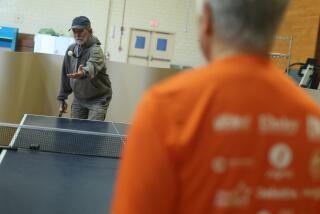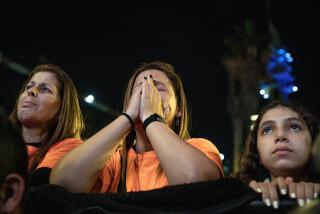VA Treats Growing Number of Former POWs for Post-Traumatic Stress Disorder
- Share via
NASHVILLE, Tenn. — More than 30 years after he was a prisoner of war in North Korea, Al Storm still is jolted awake some nights by visions of enemy soldiers standing over his bed.
He is one of a growing number of Korean War and World War II prisoners, out of combat for decades, who are seeking counseling and other help under a special Veterans Administration program.
More than 25,000 ex-POWs have been examined since 1983, when the VA established a policy calling for physical and mental examinations of former prisoners, said Alex Kutner, health systems specialist at the VA Department of Medicine and Surgery in Washington.
Of those examined, 16% were found to need care for conditions for which they had not been treated, Kutner said.
Fewer POWs in Vietnam War
Most of the POWs are middle-age or older because relatively few American prisoners were taken in the Vietnam War--766 contrasted with 130,201 in World War II and 7,140 in Korea, VA statistics show. About 80,800 former POWs are believed to be alive today.
Of those, about 4,800 are in active psychological counseling at 148 VA facilities, officials said.
There is no way to know how many former POWs may suffer from post-traumatic stress disorder, said Barbra Key, a psychologist with the VA for 11 years. Pent-up grief and anger often linger years after prisoners are freed, she said.
“The POW experience was so extraordinary,” said Key, who works at the Veterans Administration Medical Center in Nashville and treats Storm.
He endured beatings, filthy conditions and weeklong confinement in a “punishment box” so small that he could only lie in one position without moving.
Several Health Problems
He lost about 80 pounds in four months of captivity in 1950, he said. Doctors told him that he suffered from hepatitis, dysentery, frostbite and beriberi.
The nightmares began soon after he was released, but Storm, now 55, said he “just kept on living” and did not seek help until recently.
“About six months ago I got seriously depressed,” said Storm, who is retired and lives in Nashville. “I’m not sure why.”
The depression coincided with digestive problems that probably stemmed from malnutrition that he experienced while a POW, he said. He also suffers from arthritis that he attributes to prolonged exposure to subfreezing cold.
Key said it was common for post-traumatic stress to be triggered by health problems resulting from time spent in a POW camp. The physical problems often appear as former prisoners reach middle or old age. Retirement or the death of a spouse can also trigger the disorder, she said.
30 in Therapy Group
The VA Medical Center in Nashville has started a therapy group of 30 POWs from the Korean War and plans another group for World War II POWs, she said.
Before the Korean group met last month, the medical center had never offered group therapy specifically for POWs, she said.
Storm called the groups “the greatest thing you could ever come up with.”
“You can’t sit down and talk to strangers--they don’t understand your problems,” he said.
Until 1981, the problems of former prisoners were not officially recognized by the government, but a federal law then automatically extended a full-range of VA health care to them, officials said.
The symptoms of post-traumatic stress include nervousness, depression, anger, fear of losing control, guilt, shame, nightmares, restlessness and low self-esteem.
Before 1980, the same symptoms were diagnosed as anxiety neurosis, sometimes called combat fatigue, and were usually alleviated with medication. With the new diagnosis, therapy largely replaced the old symptom-oriented treatment methods.
More to Read
Sign up for Essential California
The most important California stories and recommendations in your inbox every morning.
You may occasionally receive promotional content from the Los Angeles Times.













